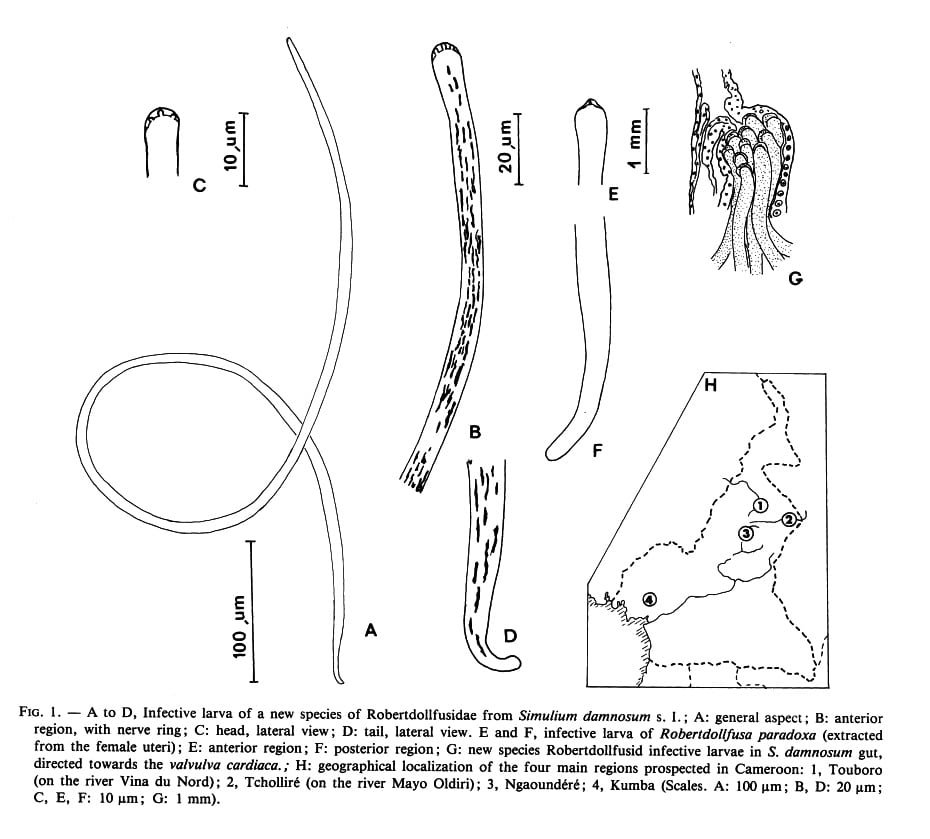[tab_container initial_open=”1″]
[tab title=”Onchocerca ochengi“]Though mainly a parasite of cattle, nodules of O. ochengi have been seen in buffaloes and in a hartebeest[/tab]
[tab title=”O. gutturosa“]Very likely to occure, but not yet searched for.
[/tab]
[tab title=”O. ramachandrini“]A newly described Onchocerca species in warthogs (Bain, O. G. Wahl, A. Renz 1993: Ann. Parasitol. Hum. Comp. 68, 139-143), transmitted by zoo-anthropophilic Simulium damnosum in the Sudan savanna. The infective larvae (formerly called ‘Type D’ by Duke 1987, Franz & Renz, 1980) are longer and thinner than those of O. volvulus and have a small tip at the tail. [/tab]
[tab title=”O. hamoni“]Nodules and microfilariae of this species are common in antelopes (Redunca redunca) in the Sudan savanna. (Dr. O. Bain ident.) [/tab]
[tab title=”Setaria spec.“]A Setaria worm was found in an antelope, but is not yet determined[/tab]
[tab title=”Robertdollfusidae new spec.“]
Microfilariae of this species have been exclusively found in man-biting Simulium damnosum along the river Vina du Nord, Cameroon. These microfilariae are very long (1.200-1.600 µm) and belong to a fairly known group of nematodes, found in Corvid birds in France, macropodic marsupialians in Australia and in reindeer in Finland (Bain, O. & A. Renz, 1993: Ann. Parasitol. Hum. Comp. 68, 182-184 [/tab]
[/tab_container]



Leave a Reply
Want to join the discussion?Feel free to contribute!